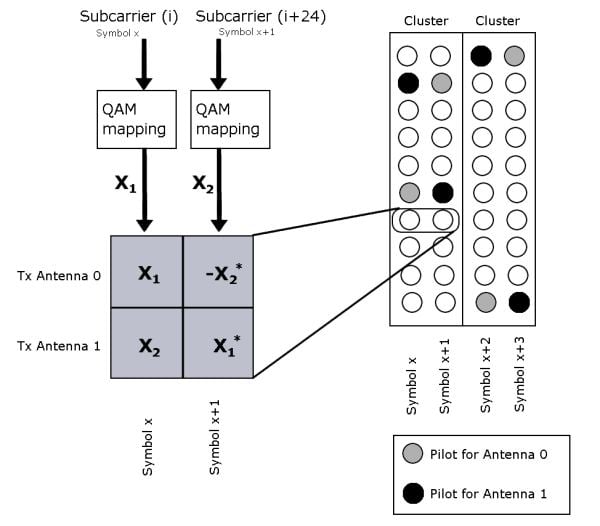 | ||
A space–time code (STC) is a method employed to improve the reliability of data transmission in wireless communication systems using multiple transmit antennas. STCs rely on transmitting multiple, redundant copies of a data stream to the receiver in the hope that at least some of them may survive the physical path between transmission and reception in a good enough state to allow reliable decoding.
Space time codes may be split into two main types:
STC may be further subdivided according to whether the receiver knows the channel impairments. In coherent STC, the receiver knows the channel impairments through training or some other form of estimation. These codes have been studied more widely, and division algebras over number fields have now become the standard tool for constructing such codes.
In noncoherent STC the receiver does not know the channel impairments but knows the statistics of the channel. In differential space–time codes neither the channel nor the statistics of the channel are available.
